Abstract
Culex quinquefasciatus, which is sometimes the vector of Bancroft's filariasis, is a harmful mosquito, the immature stages of which live in collections of waste water resulting from human activity. Larval control, the most appropriate method, is at present carried out with chemical insecticides. But the toxicity of these compounds, together with phenomena of resistance, and the cost of substitute insecticides have turned research towards products of biological origin, and one of the most promising is a liquid concentrate of Bacillus sphaericus strain 2362. This was applied experimentally over an area of 200 hectares in a large city in the south of Cameroon, characterized by a short dry season during which mosquito density is at its highest. Spraying was carried out every three months for a year in a concentration of 10 g/m2 and its efficacy evaluated at the level of adult mosquitos through an indirect system of capture on human baits. The results of this study show, in essence, a reduction by 52.7% in the number of females captured in the overall study area treated, and that the impact of treatment is greater during the period of high mosquito density (55.1%) than in the low density period (40.7%). After analysis of the full set of results, the authors conclude that the pattern of rainfall, the conditions in which the insecticide is applied and reinvasions of mosquitos from untreated areas were the principal factors limiting the efficacy of this control campaign.(ABSTRACT TRUNCATED AT 250 WORDS)
Full text
PDF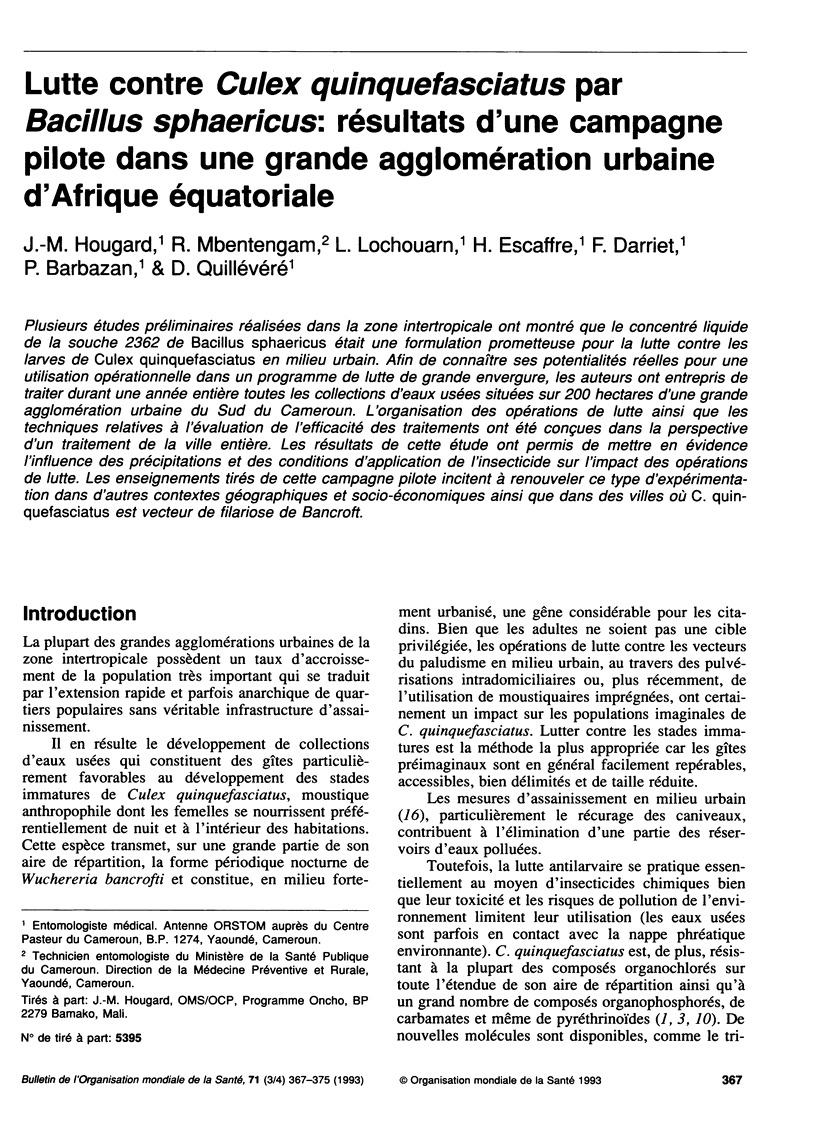
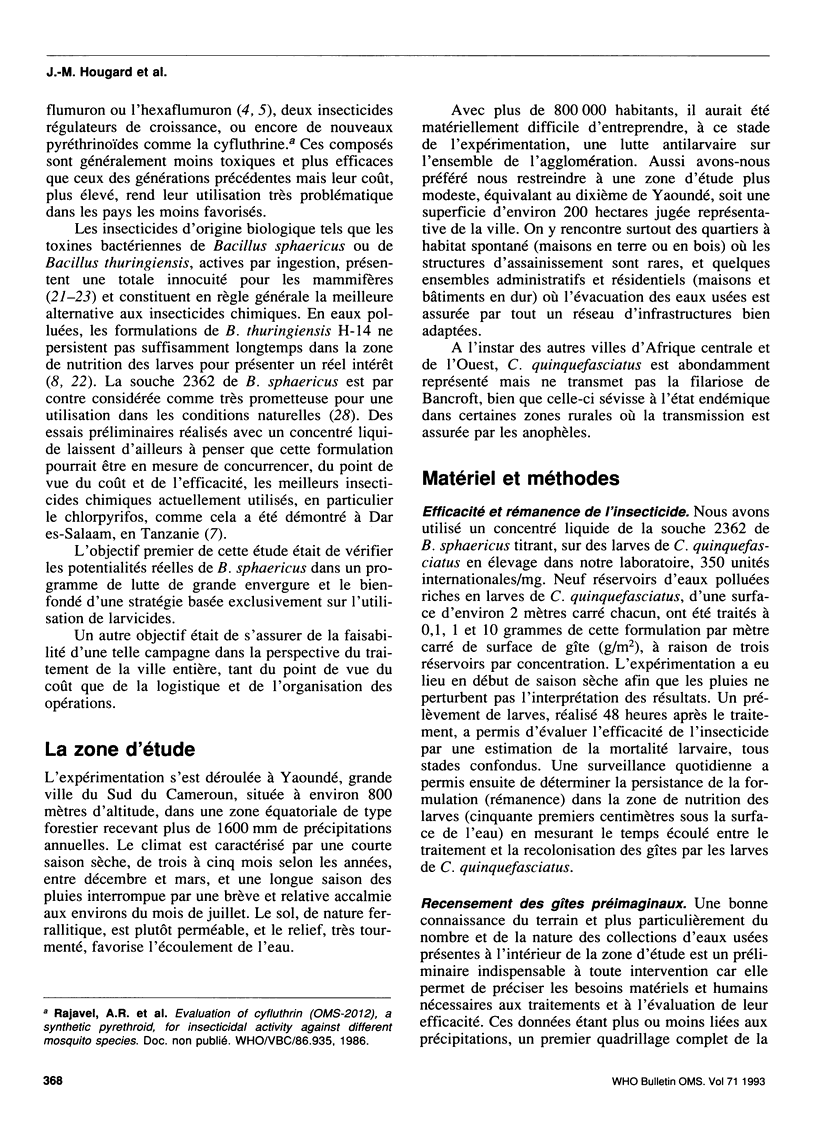
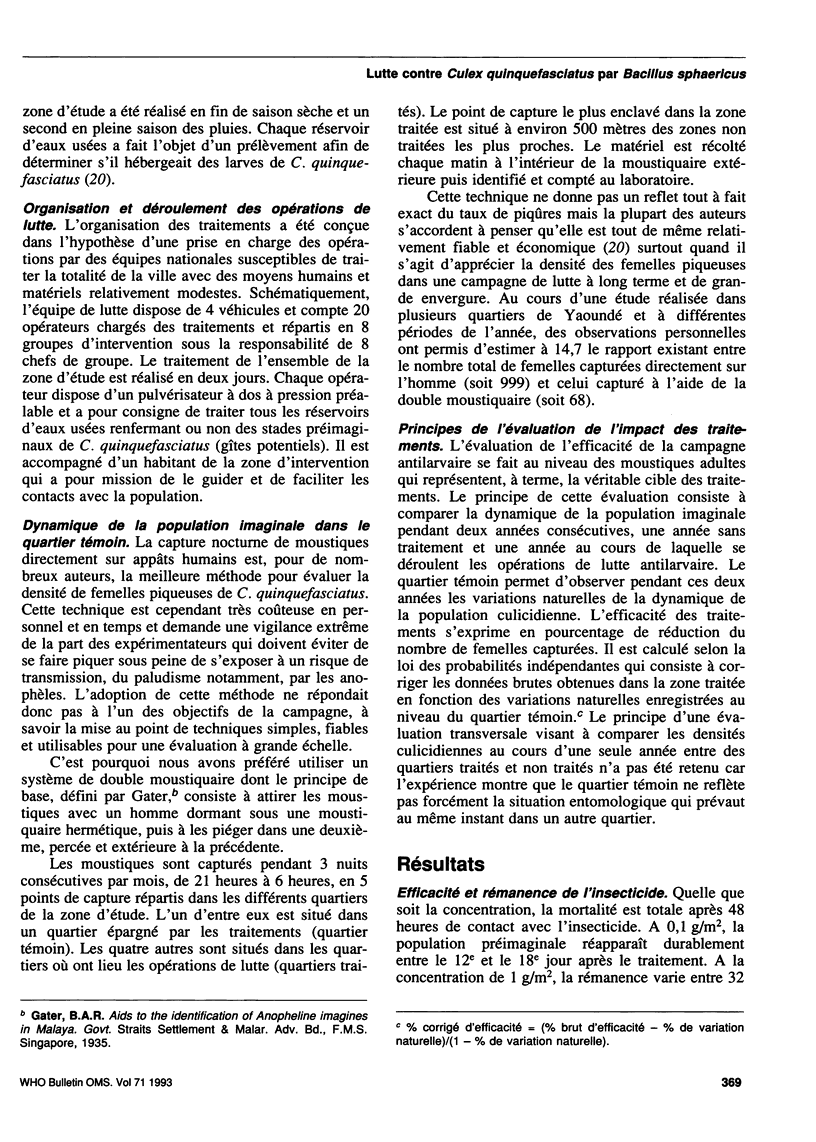
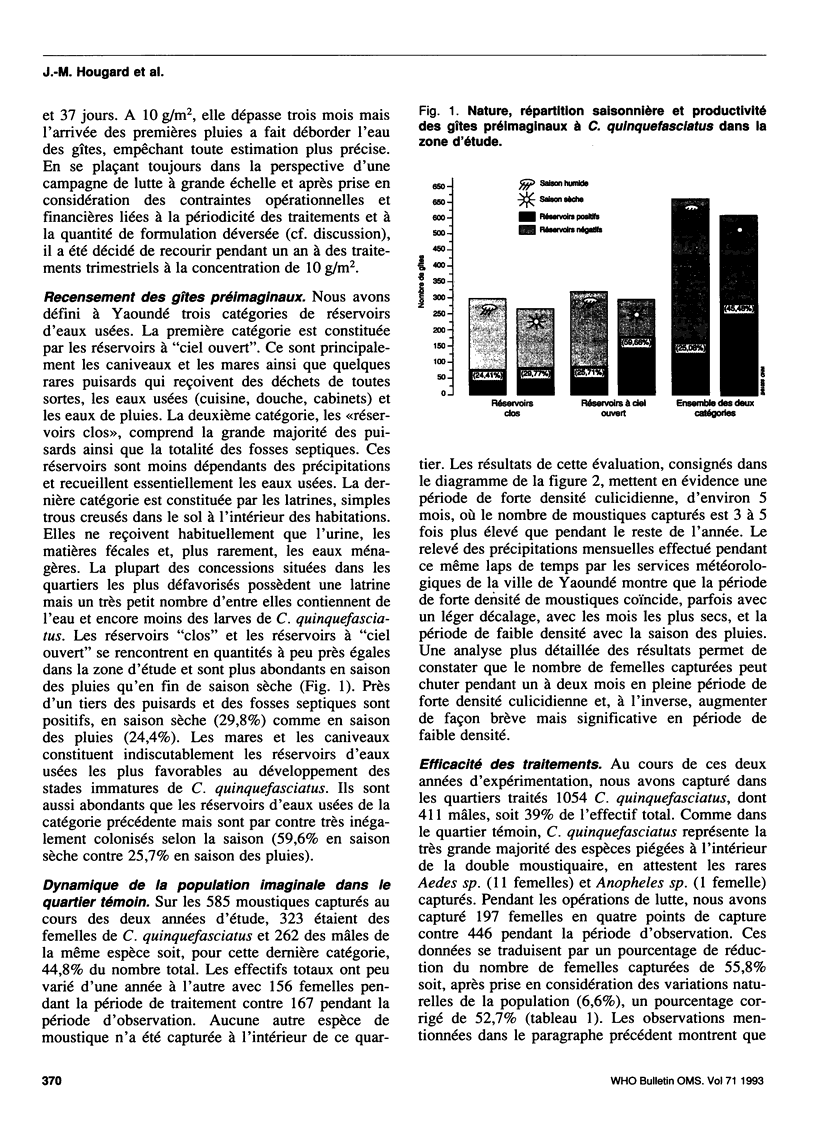
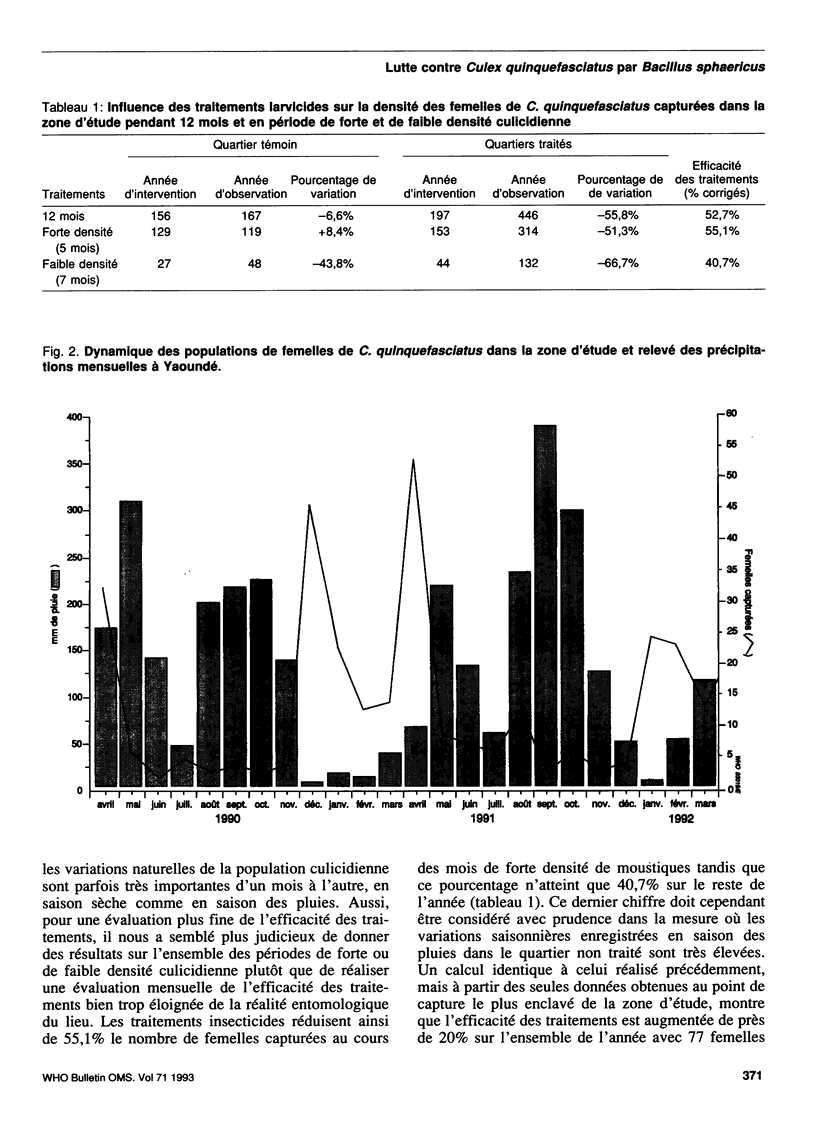
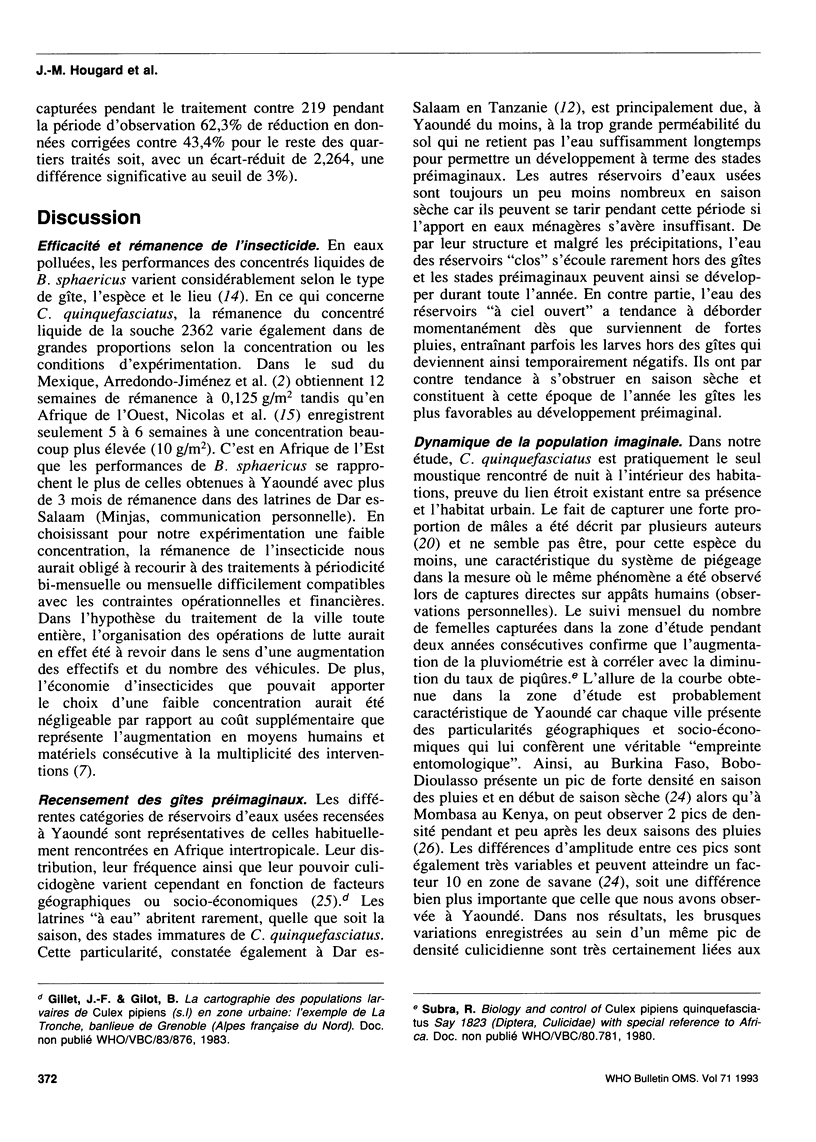
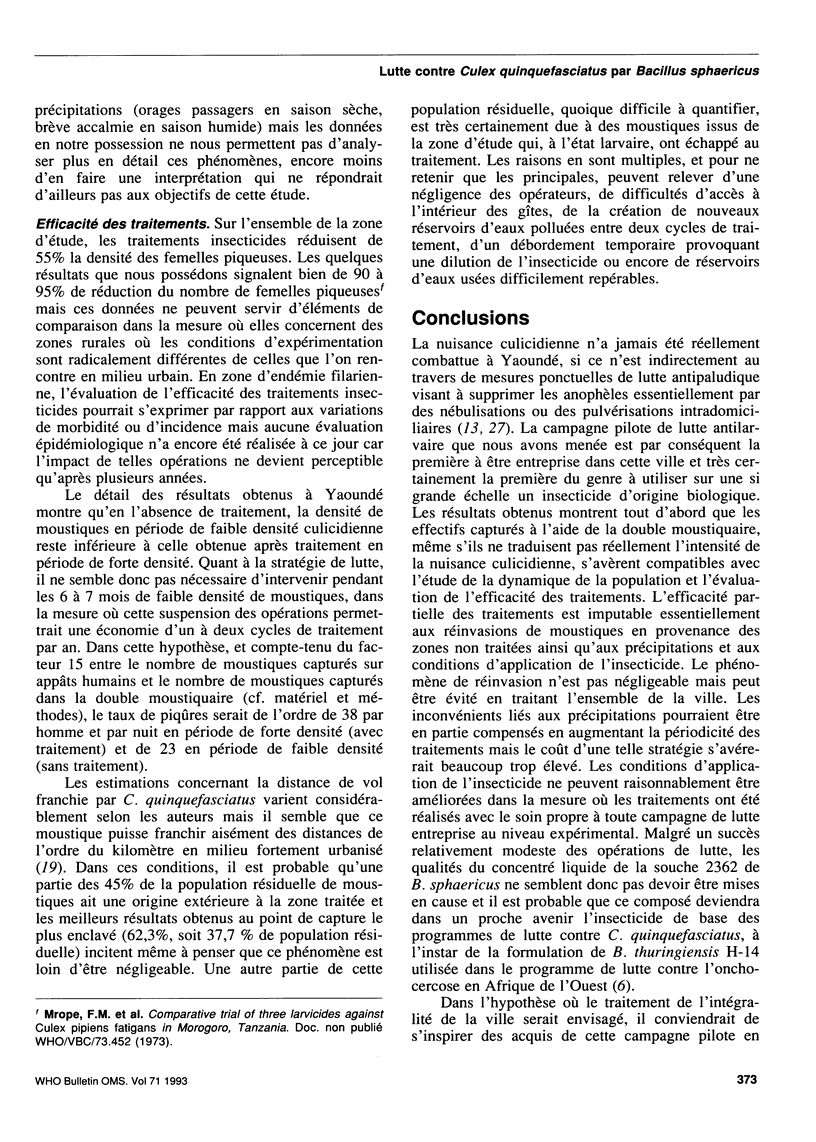
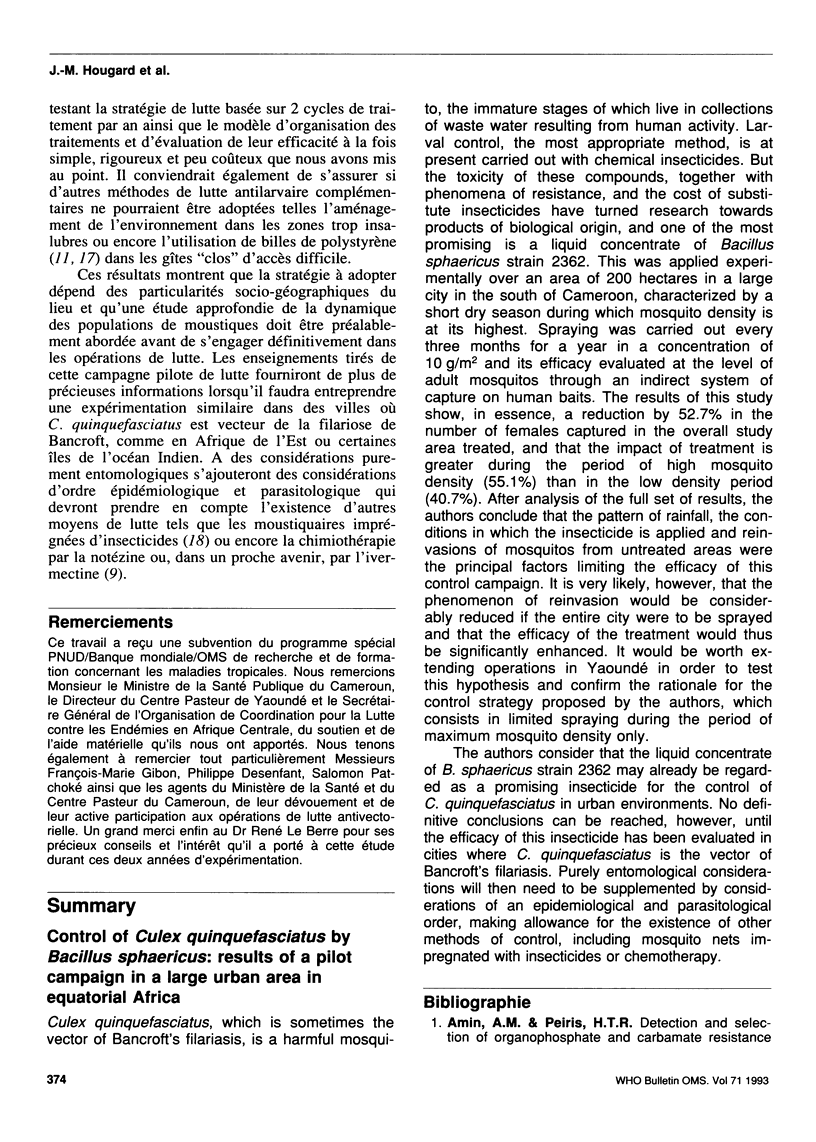
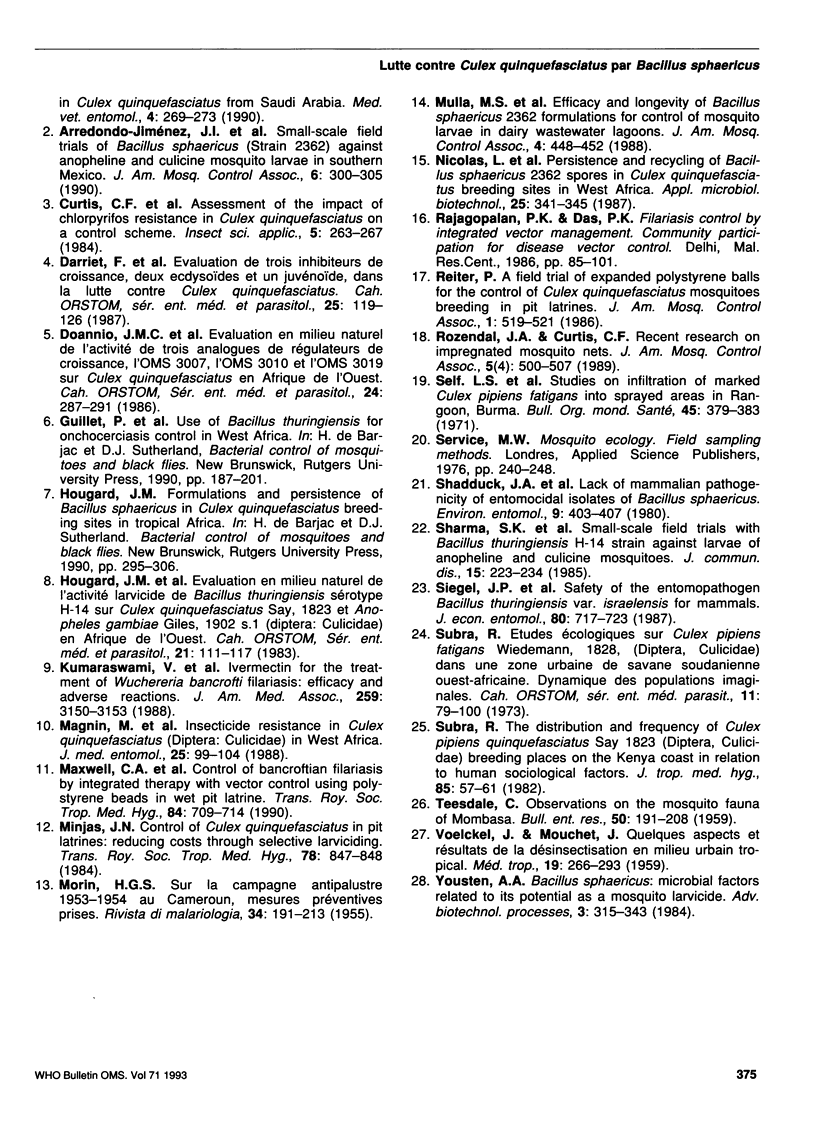
Selected References
These references are in PubMed. This may not be the complete list of references from this article.
- Kumaraswami V., Ottesen E. A., Vijayasekaran V., Devi U., Swaminathan M., Aziz M. A., Sarma G. R., Prabhakar R., Tripathy S. P. Ivermectin for the treatment of Wuchereria bancrofti filariasis. Efficacy and adverse reactions. JAMA. 1988 Jun 3;259(21):3150–3153. [PubMed] [Google Scholar]
- MORIN H. G. Sur la campagne antipalustre 1953-54 au Cameroun; mesures préventives prises; premiers résultats enregistrés. Riv Malariol. 1955 Dec;34(4-6):191–213. [PubMed] [Google Scholar]
- Magnin M., Marboutin E., Pasteur N. Insecticide resistance in Culex quinquefasciatus (Diptera: Culicidae) in West Africa. J Med Entomol. 1988 Mar;25(2):99–104. doi: 10.1093/jmedent/25.2.99. [DOI] [PubMed] [Google Scholar]
- Maxwell C. A., Curtis C. F., Haji H., Kisumku S., Thalib A. I., Yahya S. A. Control of Bancroftian filariasis by integrating therapy with vector control using polystyrene beads in wet pit latrines. Trans R Soc Trop Med Hyg. 1990 Sep-Oct;84(5):709–714. doi: 10.1016/0035-9203(90)90158-b. [DOI] [PubMed] [Google Scholar]
- Minjas J. N. Control of Culex quinquefasciatus in pit latrines: reducing costs through selective larviciding. Trans R Soc Trop Med Hyg. 1984;78(6):847–848. doi: 10.1016/0035-9203(84)90045-2. [DOI] [PubMed] [Google Scholar]
- Mulla M. S., Axelrod H., Darwazeh H. A., Matanmi B. A. Efficacy and longevity of Bacillus sphaericus 2362 formulations for control of mosquito larvae in dairy wastewater lagoons. J Am Mosq Control Assoc. 1988 Dec;4(4):448–452. [PubMed] [Google Scholar]
- Reiter P. A field trial of expanded polystyrene balls for the control of Culex mosquitoes breeding in pit latrines. J Am Mosq Control Assoc. 1985 Dec;1(4):519–521. [PubMed] [Google Scholar]
- Rozendaal J. A., Curtis C. F. Recent research on impregnated mosquito nets. J Am Mosq Control Assoc. 1989 Dec;5(4):500–507. [PubMed] [Google Scholar]
- Self L. S., Tun M. M., Mathis H. L., Abdulcader M. H., Sebastian A. Studies on infiltration of marked Culex pipiens fatigans into sprayed areas in Rangoon, Burma. Bull World Health Organ. 1971;45(3):379–383. [PMC free article] [PubMed] [Google Scholar]
- Sharma S. K., Kalra N. L., Bhargava Y. S. Small scale field trials with Bacillus thuringiensis variety israelensis H-14 strain against larvae of anopheline and culicine mosquitoes. J Commun Dis. 1983 Dec;15(4):223–234. [PubMed] [Google Scholar]
- Siegel J. P., Shadduck J. A., Szabo J. Safety of the entomopathogen Bacillus thuringiensis var. israelensis for mammals. J Econ Entomol. 1987 Aug;80(4):717–723. doi: 10.1093/jee/80.4.717. [DOI] [PubMed] [Google Scholar]
- Subra R. The distribution and frequency of Culex pipiens quinquefasciatus Say 1823 (Diptera, Culicidae) breeding places on the Kenya Coast in relation to human sociological factors. J Trop Med Hyg. 1982 Apr;85(2):57–61. [PubMed] [Google Scholar]
- Yousten A. A. Bacillus sphaericus: microbiological factors related to its potential as a mosquito larvicide. Adv Biotechnol Processes. 1984;3:315–343. [PubMed] [Google Scholar]


